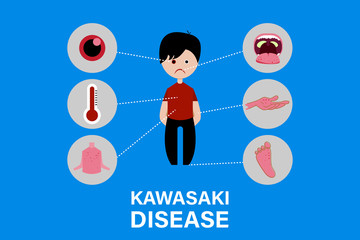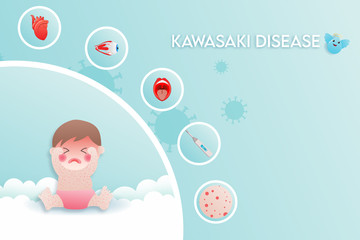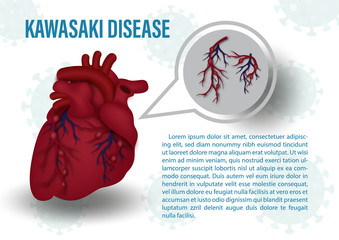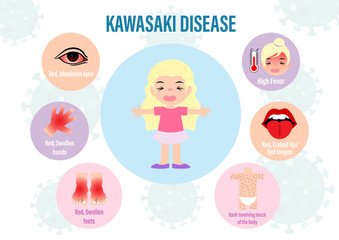Kawasaki Disease Treatment
Kawasaki Disease Treatment (KD) is a rare but serious condition that primarily affects young children, particularly those more youthful than 5. A safe framework ailment causes exacerbation in the walls of veins, perhaps provoking serious disarrays like coronary passage aneurysms if not broke down and treated early. The specific reason for Kawasaki illness is obscure, yet including a strange safe reaction to a contamination or ecological trigger in hereditarily inclined children is accepted.
This article investigates the different parts of Kawasaki sickness therapy, including the standard treatments, the significance of early determination, and the drawn out administration methodologies to guarantee the most ideal results for impacted kids.
Diagnosis and Early Recognition Kawasaki Disease Treatment
The treatment of Kawasaki disease hinges on early recognition. Diagnosing KD can be testing, particularly since it imparts side effects to other normal youth sicknesses, like viral contaminations and other vasculatures. The conclusion is fundamentally clinical, meaning it depends on a youngster’s signs and side effects. As indicated by the American Heart Affiliation (AHA) and other master bodies, the illness is analysed when a kid has a fever enduring over five days and no less than four of the accompanying five standards:
- Bilateral conjunctiva infusion (red eyes)
- Oral mucosal changes, (for example, broke lips, strawberry tongue)
- Peripheral furthest point changes (redness, expanding, or stripping of hands or feet)
- Rash
- Cervical lymphadenopathy (enlarged lymph hubs in the neck)
At times, kids might give inadequate Kawasaki sickness, where less than four of the above models are available, yet the determination is as yet thought in view of fever and other clinical signs. Early determination and treatment are essential, as convenient intercession can lessen the gamble of extreme confusions, especially heart harm.
Standard Treatment Options
The underpinning of Kawasaki ailment treatment incorporates keeping an eye on the bothering and hindering cardiovascular complexities, particularly coronary conductor aneurysms.

- Intravenous Immunoglobulin (IVIG)
IVIG is the first-line therapy for Kawasaki infection. It is a blood item got from the pooled plasma of solid givers and contains a combination of antibodies. IVIG has been displayed to diminish the aggravation related with Kawasaki illness and altogether decline the gamble of coronary course complexities.
Controlling a high part of IVIG (2 g/kg of body weight) rapidly after end is proposed. The blend commonly expects 8 to 12 hours and is ordinarily especially persevered. Studies have shown that IVIG therapy given inside the underlying 10 days of infection can unequivocally cut down the bet of long stretch heart ensnarement’s.
Most children answer IVIG treatment inside 24 to 48 hours, with a decrease in fever and improvement in various secondary effects. Nevertheless, somewhat level of youths could have a “tenacious” response, meaning their fever proceeds paying little heed to getting IVIG. In such cases, additional measurements of IVIG may be given, or various medications like corticosteroids may be considered.
2. Aspirin
Headache medicine is utilized in the treatment of Kawasaki sickness for its mitigating properties and to diminish the gamble of blood cluster development. The administration of ibuprofen in Kawasaki illness is unmistakable from its utilization in different circumstances since it is normally utilized both in the intense stage and during the improving stage.
- Extraordinary Phase: Cerebral pain medication is given at high measurements (80 to 100 mg/kg/day) to lessen fever and exacerbation. This portion is higher than normal over-the-counter use and helps with controlling the combustible response.
- Further developing Phase: After the extraordinary incidental effects resolve, the part of hostile to inflamatory medication is lessened (typically 3 to 5 mg/kg/day) and happened for a brief period or months. Low-segment migraine medication is used to help with preventing bunch plan in the coronary veins, which could become weakened or augmented during the illness.
Regardless of the way that ibuprofen is fruitful in treating Kawasaki sickness, its use requires mindful checking to avoid conceivable optional impacts, as gastrointestinal depleting or Reye’s problem (an unprecedented yet troublesome condition that can happen when migraine medication is given to jokes with viral pollutions).
3. Corticosteroids
Corticosteroids, like prednisone, are not regularly utilized in that frame of mind of Kawasaki sickness however might be viewed as in instances of serious or obstinate illness. These meds are powerful calming specialists that can be compelling in overseeing serious aggravation and decreasing the gamble of coronary corridor aneurysms.
Steroid therapy is generally put something aside for adolescents who don’t answer starting IVIG therapy or the people who present with extra serious appearances of the infection. The decision to use corticosteroids is placed forward on a guard by-case premise, and the risks and benefits ought to be meticulously checked, as steroids can have gigantic secondary effects, including improvement camouflage, hypertension, and safe structure disguise.
4. Other Immunomodulatory Treatments
In uncommon cases, when Kawasaki sickness doesn’t answer starting therapy, other immunomodulatory treatments might be thought of. These medicines include:

- Infliximab: A monoclonal immune response that objectives growth rot factor-alpha (TNF-alpha), a provocative cytokine. Infliximab has been demonstrated to be powerful at times of obstinate Kawasaki illness and is utilized as a second-line treatment choice.
- Methotrexate: Albeit not generally utilized in the intense stage, methotrexate, an immunosuppressive medication, might be considered for ongoing cases or in situations where different therapies fizzle.
These treatments are commonly saved for additional confounded or extreme cases and are utilized under the direction of a paediatric rheumatologist or immunologist.
Supportive Care
Notwithstanding the primary treatment modalities, strong consideration assumes a fundamental part in overseeing Kawasaki illness. Youngsters with KD require close observing, especially in the intense stage, to guarantee appropriate hydration, oversee fever, and forestall optional diseases.
- Hydration: On the grounds that fever can prompt drying out, it is pivotal to keep up with satisfactory liquid admission. IV liquids might be fundamental in serious cases.
- Torture Relief: Delicate analgesics, similar to acetaminophen (Tylenol), may be used to control not exactly overpowering anguish and bother, especially during the serious stage. Nevertheless, non-steroidal relieving drugs (NSAIDs) are generally avoided considering the way that they can dial back enemy of inflammatory medication treatment.
- Checking for Complications: Children with Kawasaki disorder ought to be solidly noticed for cardiovascular bothers, including coronary course extending and aneurysms. Echocardiograms are routinely performed during and after treatment to overview the prosperity of the heart and veins.
Long-Term Follow-Up and Management

Even after the acute phase of Kawasaki disease has passed, long-term follow is crucial for screen for the advancement of cardiovascular issues, especially coronary corridor harm. Youngsters who have had Kawasaki sickness are in danger of creating coronary conduit aneurysms, which can prompt respiratory failures or other serious heart conditions.
The American Heart Affiliation suggests that kids who have had Kawasaki illness go through occasional cardiovascular assessments, including echocardiograms and in some cases angiograms, to screen the state of their coronary supply routes. At times, long haul anticoagulation or different drugs might be important to lessen the gamble of cluster development.
The recurrence of follow-up arrangements and heart assessments relies upon the seriousness of the sickness and whether any inconveniences were distinguished during the intense stage. By and large, kids with no coronary conduit irregularities might require follow-up care for a couple of years, while those with coronary inconveniences might require long lasting observing by a paediatric cardiologist.
Conclusion
Kawasaki disease is a potentially life-condition that requires brief determination and therapy to limit the gamble of serious inconveniences, especially heart-related issues. The standard treatment choices — intravenous immunoglobulin (IVIG), headache medicine, and corticosteroids — are successful in diminishing aggravation and forestalling cardiovascular harm when controlled early.
Close checking during the intense stage and customary subsequent arrangements are fundamental to guarantee the most ideal results for youngsters impacted by this infection. With early intercession, most youngsters with Kawasaki illness recuperate without huge long haul issues, albeit those with coronary vein inclusion might require expanded care.
As exploration keeps on revealing insight into the basic causes and best medicines for Kawasaki illness, upgrades in care and long haul the board are normal, giving desire to far better results for kids from here on out.
[sp_easyaccordion id=”4273″]
